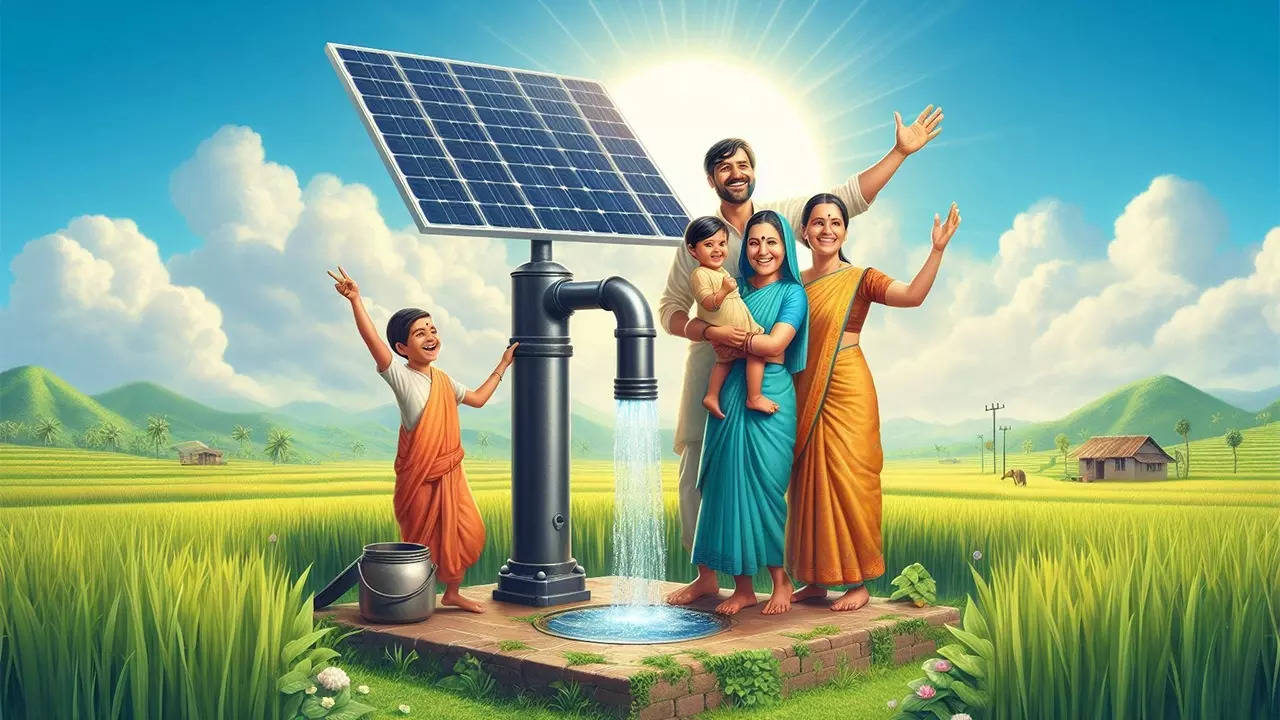


Subsidy on solar is an initiative started by the Government of India so that clean and green energy i.e. solar power can reach every corporate and private sector. This will increase your savings as well as eliminate your dependence on the government grid.
Solar energy is a source of immeasurable energy which does not create any kind of pollution. Therefore, the government is engaged in promoting solar power in every way. Solar power today is not only a substitute for our exhausting resources but has become a symbol of our progress.
If you are interested in solar, please read the following information about solar subsidies and other solar benefits.
MNRE (Ministry of New and Renewable Energy – Central Government) has set the target to install 227 Gigawatt (22,70,00,000 kilowatt) by 31 March 2022. To achieve this target govt. is promoting solar power in many ways. The government also sectioned an amount of Rs.5,000 crore for solar subsidies only. Now you can install solar systems with subsidies at low prices. Let us know how much subsidy you will get on the solar system and what will be the procedure to get it.
According to the latest notification by MNRE, 30% to 90% subsidy on benchmark capital cost is available for all consumers. But actually, how much subsidy you will get on solar panels depends on what capacity and type of solar system you are getting installed. Let’s know how much subsidy you will get for installing a solar system of which capacity.
fter knowing about solar subsidy rates, now the question arises whether the subsidy is available on all types of solar system. For this, you need to have some knowledge about the type of solar system. So let’s dive into it.
There are three types of solar system:

For the overall development of India, the government is paying special attention to the agriculture sector. Therefore, the government of India is providing up to 90% subsidy to farmers and others who want to install solar water pump at their places.
But like subsidy on solar system, subsidy on solar water pump also depends on the policy of your state. There are some special provisions for some hilly states like J&K, Himachal Pradesh & UK. However, you can apply to install subsidized solar water pumps in any state. It definitely going to double your profits.
Perhaps now you must be thinking that am I also eligible for subsidy on the solar system? This question bothers most people because no one gives a direct answer to it. Have a look below to know who is eligible for subsidy on solar in India.
The method of getting subsidy on solar has completely changed now. The way of giving subsidy to you has been made easier by the government. So let’s know what is the right way to subsidize solar panel system.
First of all, the solar company will install your solar system and put a request for net metering. After the completion of the net meter request process, the net meter is connected with your solar system. Net meter generates a report of your solar system and the same report is submitted for subsidy.

MNRE will evaluate the report of your solar system and will send the subsidy amount to the account of the solar company after sanctioning. Keep in mind that the subsidy will not come in your bank account but the account of the solar company. The solar company will collect the remaining payment from you after reducing the amount of subsidy.
Residential and commercial customers who are paying more than Rs.1,000 as monthly electricity bills should consider installing an on-grid solar system to save their electricity bills. It not only saves your money but also will give you an amazing return on investment. Look at the ROI calculator below for more details.
An on-grid solar system gives you subsidy benefits as well as net metering benefits. You can run all your appliances in the daytime by using solar power. Keep in mind that at this time you are not using grid electricity and hence your electricity bill is not increasing during the day.

If your solar system is generating more electricity than you consume, you can export it to the utility grid through a net meter. A net meter is a small device that allows you to inject electricity into the government grid. It measures the units of electricity that have been exported by you to the grid. At the end of the month, the government will adjust it in your electricity bill and pay you a certain amount as per your export.
In case your solar system is generating less solar energy than your consumption, then you can use grid electrified without any problem. Because the grid connection will already be connected to your home appliances.
Commercial, private, and industrial customers can leverage accelerated depreciation benefits. Solar power generation projects have the option of profiting from accelerated depreciation benefit by the central government, as per section 32 of the Income Tax Act, 1961. Companies can use this to substantially reduce their tax burden in the first few years of the project up to 100% of the project cost (80% accelerated depreciation and 20% additional depreciation)

Under section 80-IA of the Income Tax Act, 1961 the central government provides a 10-year tax holiday, in which the beneficiary has the freedom to choose a 10-year continuous period in the first fifteen years of the project life to avail the tax benefit. The projects are taxed by using the Minimum Alternate Tax (MAT) rate, which is significantly lower than the corporate tax rate.
The central government has mandated concessions and exemptions on specific materials imported for the manufacture of solar power generation products as well as for use in solar power generation projects.